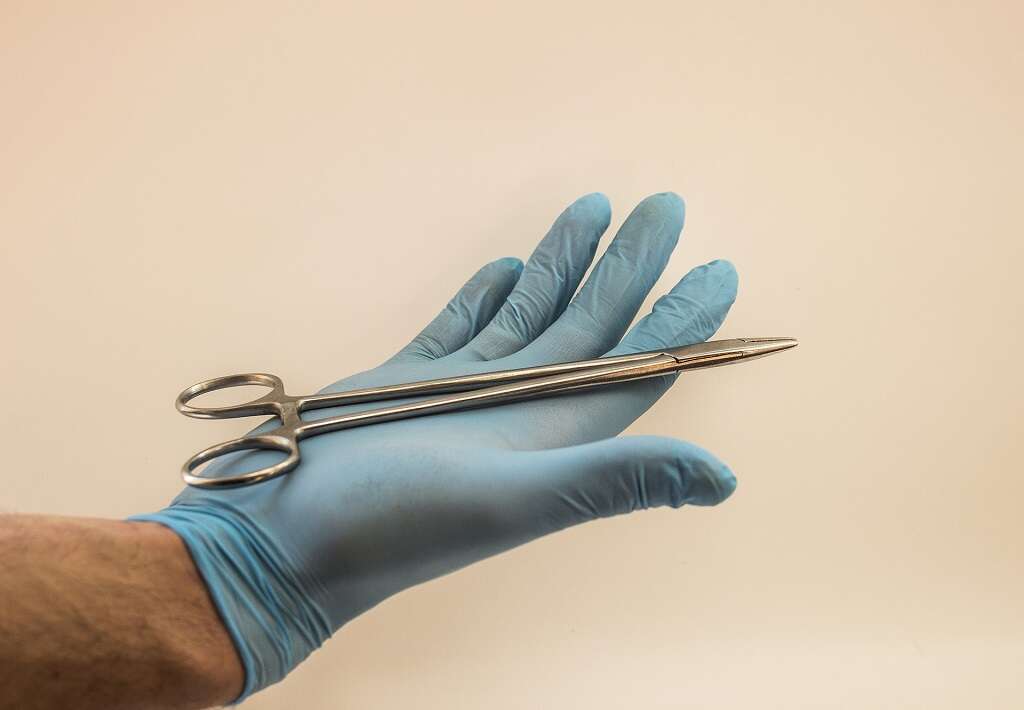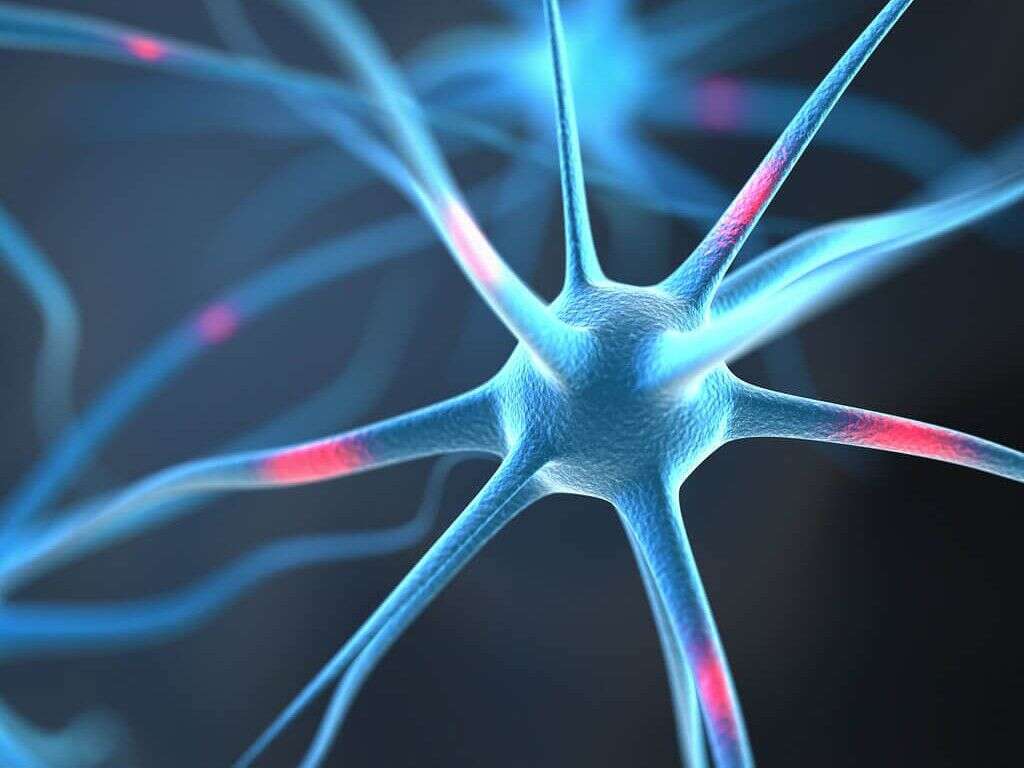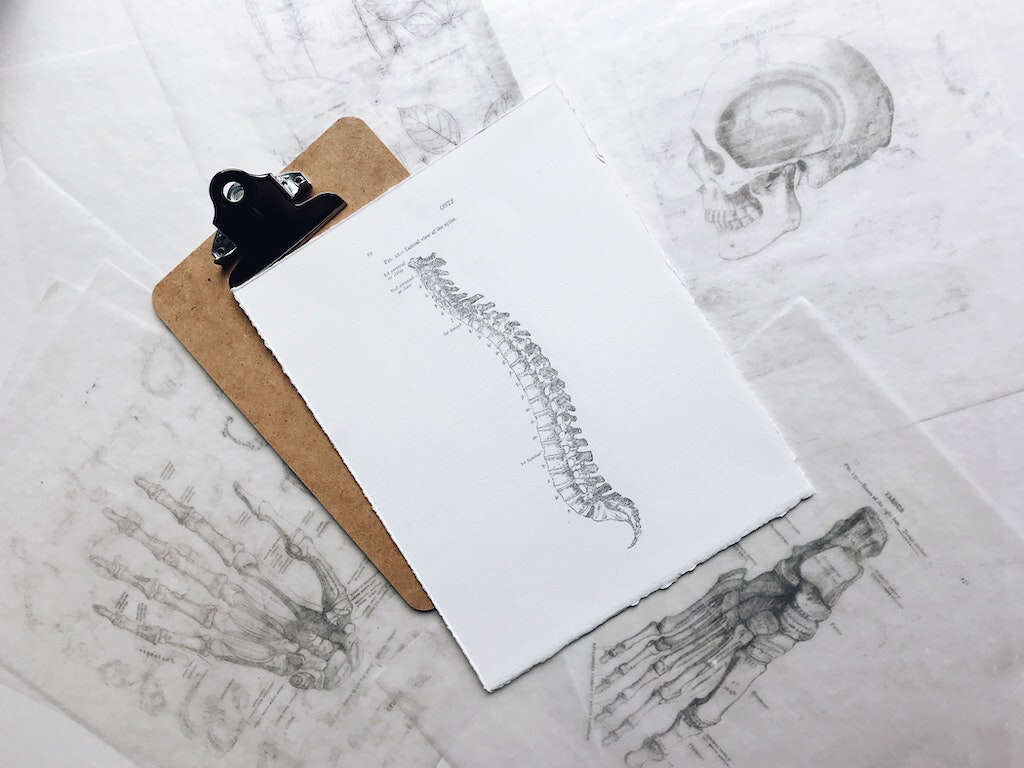Meralgia Paresthetica Symptoms, Causes and More
 Article Sources
Article Sources
- 1. ’Meralgia Paresthetica.’ Mayo Clinic. https://www.mayoclinic.org/diseases-conditions/meralgia-paresthetica/symptoms-causes/syc-20355635
- 2. ’Meralgia Paresthetica.’ Hopkins Medicine. https://www.hopkinsmedicine.org/health/conditions-and-diseases/meralgia-paresthetica
- 3. ’Burning Thigh Pain (Meralgia Paresthetica).’ American Academy of Orthopedic Surgeons: OrthoInfo https://orthoinfo.aaos.org/en/diseases--conditions/burning-thigh-pain-meralgia-paresthetica
Meralgia paresthetica, also known as Bernhardt Roth Syndrome, occurs when a person experiences nerve compression in the thigh that causes pain and numbness. It only affects the nerve that transmits sensation to that area, called the lateral femoral cutaneous nerve. The nerves that stimulate muscles to move aren't affected.
The lateral femoral cutaneous nerve travels from the abdomen under the inguinal ligament in the groin through to the upper thigh. Any compression or irritation of this nerve from clothes or other sources can cause discomfort. Sometimes, meralgia paresthetica can resolve on its own if the specific cause is addressed.1’Meralgia Paresthetica.’ Mayo Clinic. https://www.mayoclinic.org/diseases-conditions/meralgia-paresthetica/symptoms-causes/syc-20355635,2’Meralgia Paresthetica.’ Hopkins Medicine. https://www.hopkinsmedicine.org/health/conditions-and-diseases/meralgia-paresthetica
1. Symptoms of Meralgia Paresthetica
People with meralgia paresthetica commonly complain of numbness, tingling or burning pain on the surface of the upper outer thigh. The condition typically affects only one side of the body at a time. Walking or standing for long periods may make the unpleasant sensations worse.1’Meralgia Paresthetica.’ Mayo Clinic. https://www.mayoclinic.org/diseases-conditions/meralgia-paresthetica/symptoms-causes/syc-20355635
Pressing on the thigh should duplicate the pain. A light touch rather than deep pressure may make the pain worse. The pain and tingling may travel down as far as the outside of the knee. Occasionally, a person may experience an ache in the groin area or pain spreading across the buttocks.2’Meralgia Paresthetica.’ Hopkins Medicine. https://www.hopkinsmedicine.org/health/conditions-and-diseases/meralgia-paresthetica
2. Meralgia Paresthetica Causes
Compressed lateral femoral cutaneous nerves can cause meralgia paresthetica. Normally, there's ample room for the nerve, but if it becomes trapped, symptoms may occur. Where the nerve travels under the inguinal ligament, the ligament may press on it.
Causes can include tight clothing, weight gain or obesity, pregnancy or wearing a heavy tool belt. The nerve may be damaged by diabetes or by a seat belt in an auto accident. Repetitive leg motion or scar tissue from prior surgery can also cause it.1’Meralgia Paresthetica.’ Mayo Clinic. https://www.mayoclinic.org/diseases-conditions/meralgia-paresthetica/symptoms-causes/syc-20355635,2’Meralgia Paresthetica.’ Hopkins Medicine. https://www.hopkinsmedicine.org/health/conditions-and-diseases/meralgia-paresthetica

3. Risk Factors for Meralgia Paresthetica
Meralgia paresthetica is more common in people aged 30 to 60, perhaps because of the prevalence of risk factors in that age group. People who are carrying extra weight and pregnant women are more at risk as well.
Individuals who wear tight clothing either by choice or for a profession such as dancing or gymnastics can also be at greater risk. Athletes and people with nerve damage from diabetes may be at higher risk too.1’Meralgia Paresthetica.’ Mayo Clinic. https://www.mayoclinic.org/diseases-conditions/meralgia-paresthetica/symptoms-causes/syc-20355635
4. Diagnosis of Meralgia Paresthetica
A thorough medical history, review of symptoms and a physical examination of the painful thigh are commonly the first steps in diagnosing meralgia paresthetica. The physician may push on the area to determine the intensity and distribution of the pain a person is experiencing. Leg strength and reflex testing may be necessary as well.3’Burning Thigh Pain (Meralgia Paresthetica).’ American Academy of Orthopedic Surgeons: OrthoInfo https://orthoinfo.aaos.org/en/diseases–conditions/burning-thigh-pain-meralgia-paresthetica
The medical history may reveal recent injuries, including strain to the inguinal ligament, causing inflammation and swelling, trapping the nerve. A history of repetitive leg motions may be mentioned, too.

5. Ruling Out Meralgia Paresthetica
It may be necessary to determine the cause of thigh pain before diagnosing it as meralgia paresthetica. Several tests may help rule out other problems. X-rays may show bone-related issues, and a CT scan or MRI may show soft tissue injuries or other abnormalities such as a tumor.
Nerve tests such as an electromyography and conduction studies may be used to identify meralgia paresthetica. If a nerve block with an anesthetic relieves the pain, it may be caused by meralgia paresthetica.1’Meralgia Paresthetica.’ Mayo Clinic. https://www.mayoclinic.org/diseases-conditions/meralgia-paresthetica/symptoms-causes/syc-20355635
6. Meralgia Paresthetica Conservative Treatment
Meralgia paresthetica may resolve naturally, and addressing the condition generally focuses on relieving pressure on the nerve. For these people, wearing loose clothing and losing excess weight may help. Medications available over the counter such as acetaminophen and ibuprofen may provide relief while the nerve heals.1’Meralgia Paresthetica.’ Mayo Clinic. https://www.mayoclinic.org/diseases-conditions/meralgia-paresthetica/symptoms-causes/syc-20355635
A doctor may recommend slowing down or stopping any activities that have been identified as causes or aggravating factors. Carpenters and others may need to switch their tool belts for tool boxes. Some physicians may order physical therapy.

7. Medical Treatment for Meralgia Paresthetica
If the discomfort persists beyond two months or gets worse, medications may be prescribed that have been shown to relieve nerve pain. These may include corticosteroids, which provide temporary relief from inflammation. These are injected and may carry some complication risks, namely joint infection and further nerve damage.
Some tricyclic antidepressants may also relieve the pain of meralgia. These may cause drowsiness, dry mouth, constipation and impaired sexual function. The third group of prescription medications is anti-seizure drugs.1’Meralgia Paresthetica.’ Mayo Clinic. https://www.mayoclinic.org/diseases-conditions/meralgia-paresthetica/symptoms-causes/syc-20355635
8. Severe, Persistent Meralgia Paresthetica
In cases of severe meralgia paresthetica that don't respond to conservative measures, the physician may recommend therapeutic nerve blocks that require injections. The focus of nerve blocks is to relieve pain and inflammation while nerve compression lessens.
Although seldom necessary for this condition, surgery may be another option. The goal of surgery is to remove tissue that's causing nerve compression. This may mean trimming the inguinal ligament or releasing scar tissue that is impinging on the nerve.1’Meralgia Paresthetica.’ Mayo Clinic. https://www.mayoclinic.org/diseases-conditions/meralgia-paresthetica/symptoms-causes/syc-20355635,3’Burning Thigh Pain (Meralgia Paresthetica).’ American Academy of Orthopedic Surgeons: OrthoInfo https://orthoinfo.aaos.org/en/diseases–conditions/burning-thigh-pain-meralgia-paresthetica

9. Prognosis of Meralgia Paresthetica
Many cases of meralgia paresthetica resolve on their own or when addressed with conservative measures within two months of diagnosis. Lifestyle changes such as stopping activities that cause pressure on the nerve or temporarily changing the fit of the patient's clothing may help.
Maintaining a healthy weight is important, as is limiting diabetic nerve injury by paying close attention to blood sugar levels. A pregnant woman who's experiencing symptoms of meralgia paresthetica may experience relief after delivery.
10. Summary
Meralgia paresthetica is a condition that causes tingling, numbness and pain on the upper thigh as a result of nerve compression or damage. Some of the common causes can include clothing that's too tight or a pregnant abdomen pressing on the nerve.
Cases of meralgia paresthetica may resolve spontaneously or with conservative measures, such as lifestyle changes and physical therapy. More severe or persistent instances may benefit from prescription medications, injections or even surgery.










